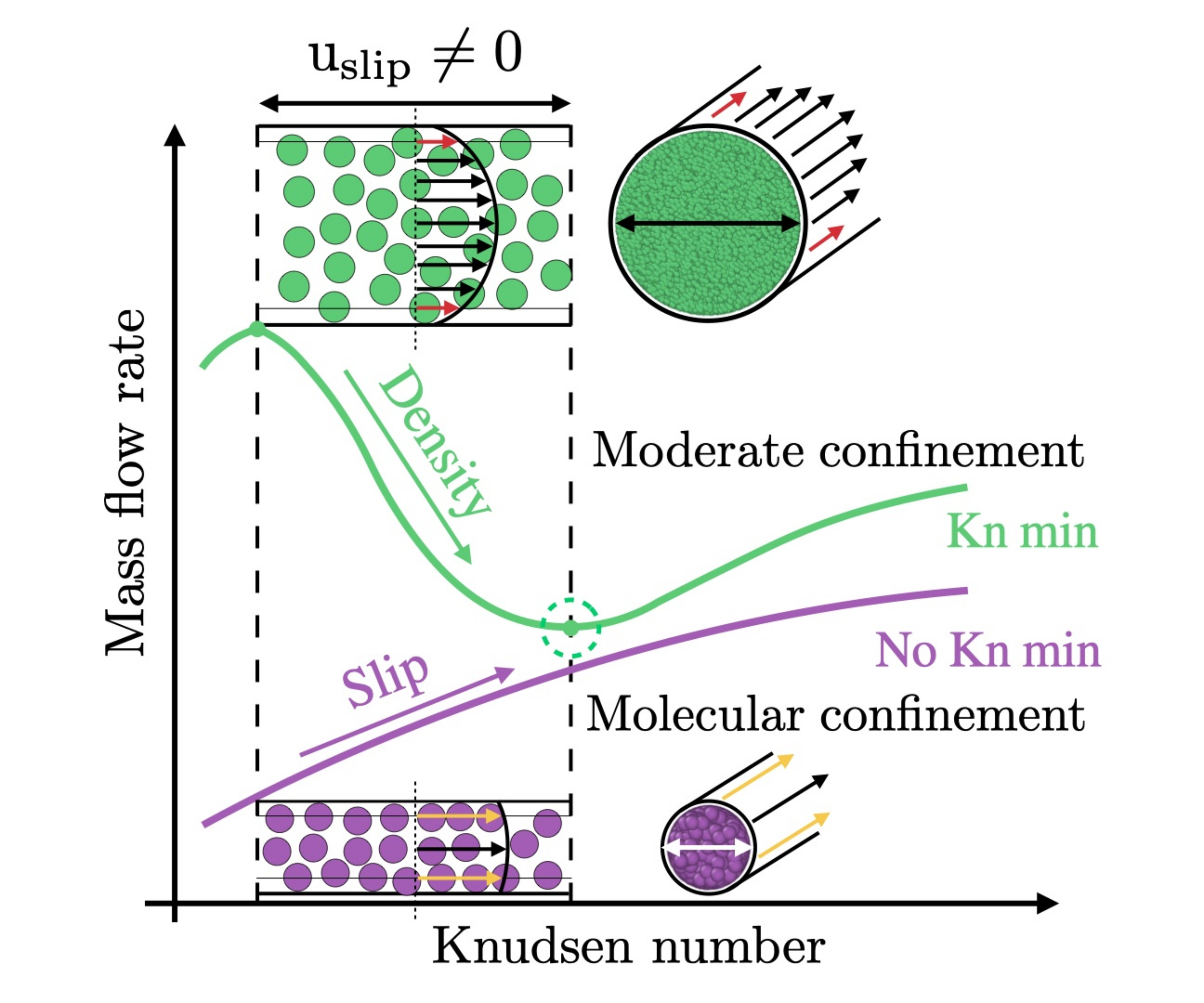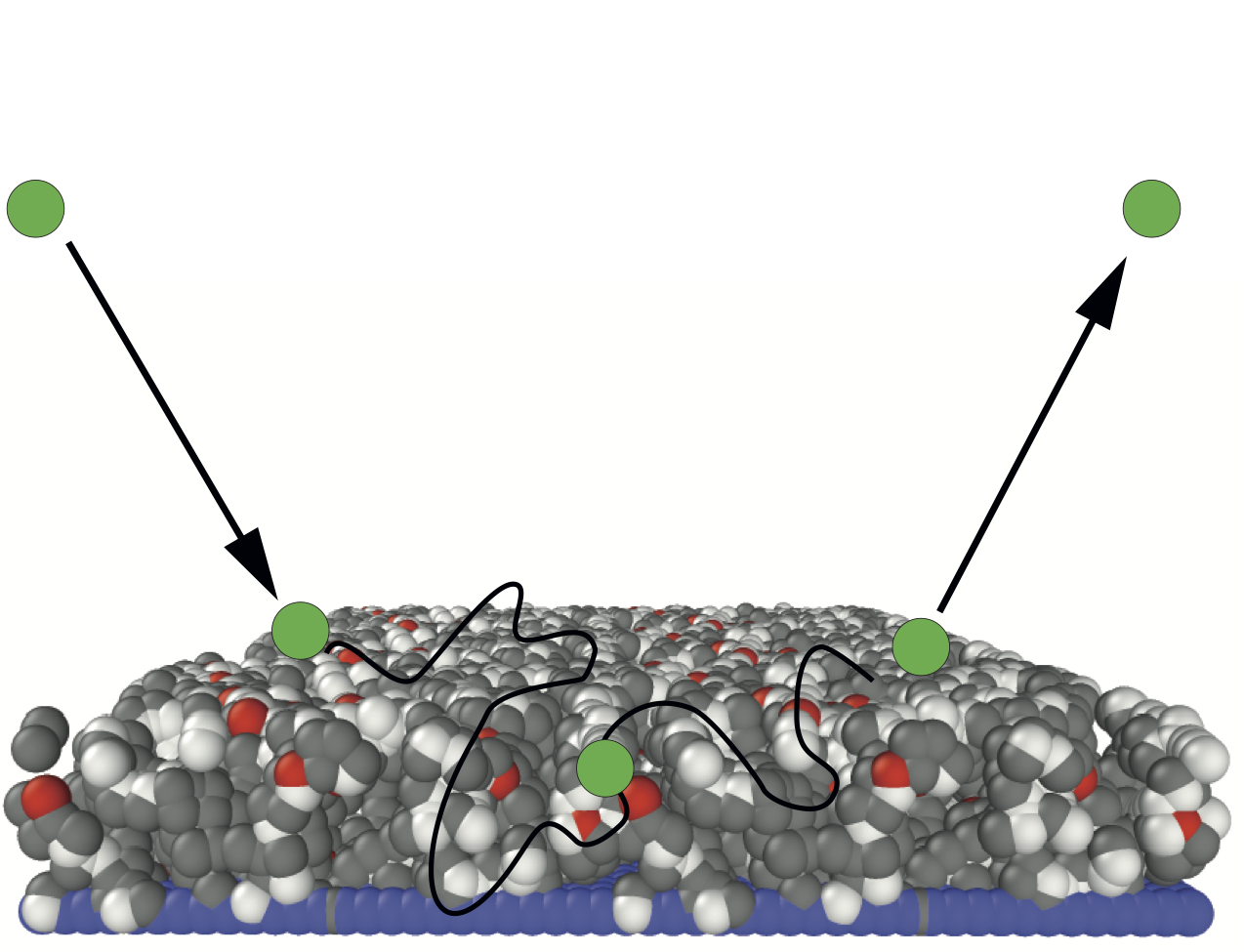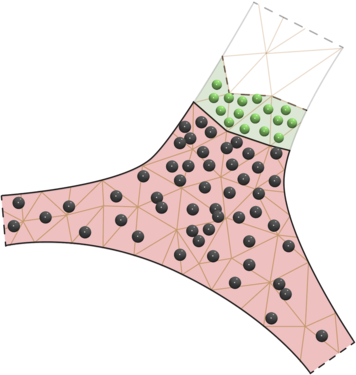Nanofluidics is an exciting interdisciplinary research area that explores the behaviour of fluids under nanoscale confinement. At this scale, molecular effects are expected to dominate the fluid physics, and the concomitant breakdown of the continuum approximation makes the Navier-Stokes equations no longer valid.
Many anomalous transport and thermodynamic phenomena kick in, which are still not fully understood, but that may potentially lead to breakthrough innovations. Examples range from the molecular and Knudsen self-diffusion mechanisms through nanoscale pores, crucial in shale-gas extraction processes, to the velocity slip along solid surfaces, whose better understanding may lead to optimise the design of desalination membranes. In this research, we investigate nanoscale transport phenomena using high-fidelity event-driven molecular dynamics simulations and theoretical analysis, based on the kinetic theory of rarefied and dense fluids.
This work is being conducted by Carlos.


